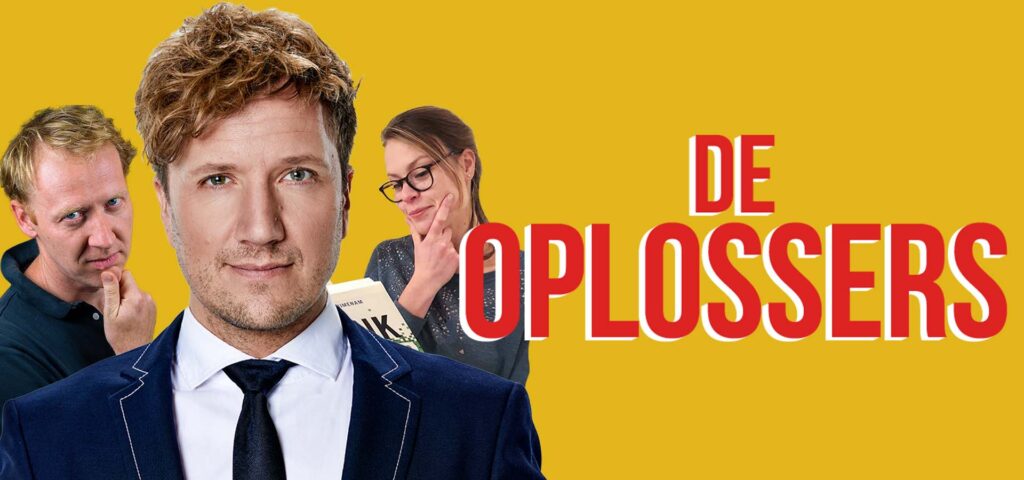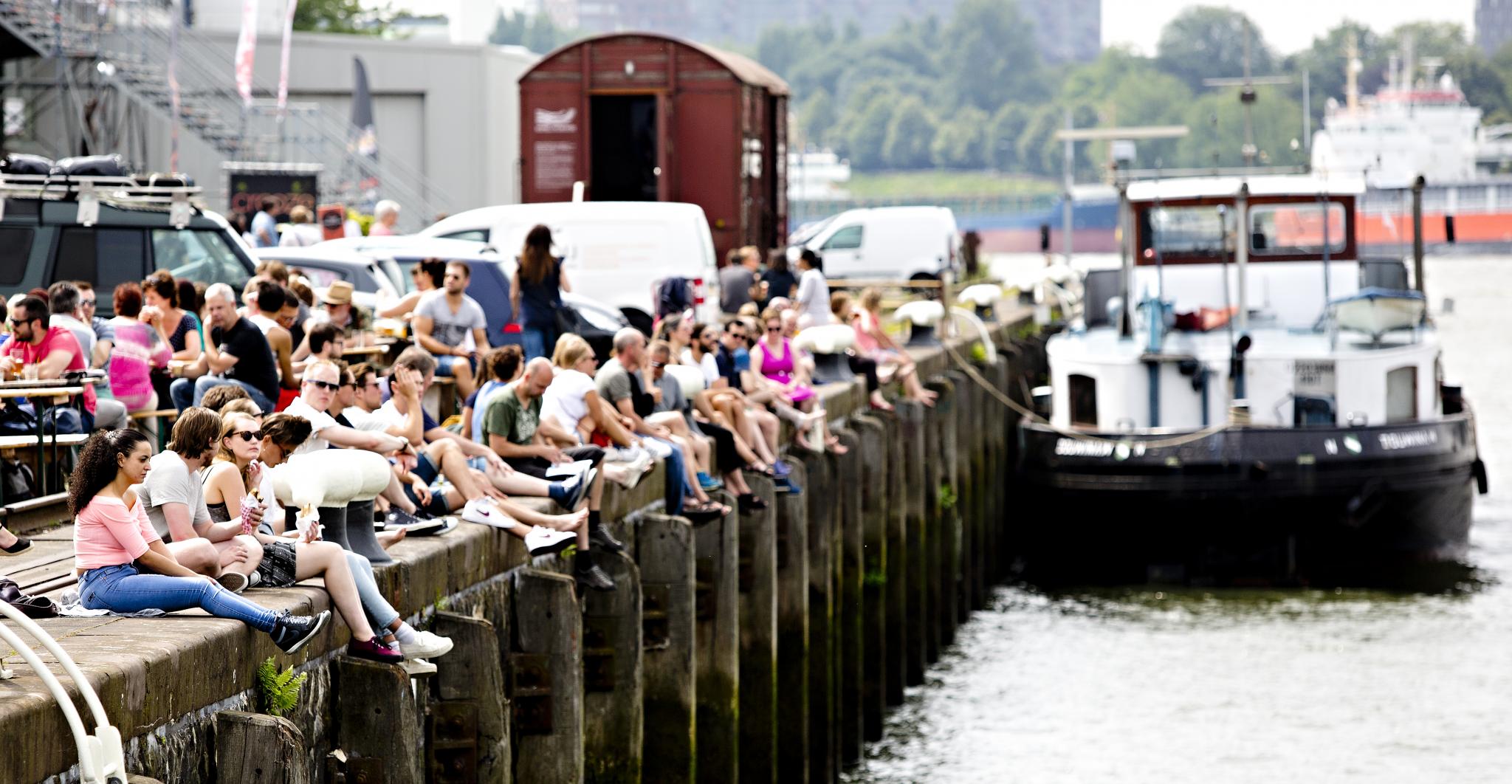How to Design Public Space for Maritime Mindsets? That’s a central question in the new Minor ‘Minor (Re)Imagining Port Cities: Understanding Space, Society, and Culture’.
Tag Archives: port economy
Solving the Dutch Housing Crises

| The Port of Rotterdam as Solution The Dutch housing shortage is manifesting itself on all fronts. There are too few rental properties, but also too few homes for starters, large families, and retirees. Mortgage rates are low, but house prices are skyrocketing. And those who do not qualify for social housing will pay themselves blue. How do we ensure that everyone has the right to a suitable home? . “Anchorman Klaas van Kruistum, Michiel Hulshof of Tertium and Claire van der Meer of the Universiteit van Nederland believe that every complex problem has a solution. And together we use the best of Dutch science to find it!” . In episode 2 of ‘De Oplossers’ of KRO-NCRV, Maurice Harteveld explains how the current harbour areas of Rotterdam could be the game changers in the housing crisis. Do we want to sacrifice the green pastures around the city or the harbour areas with large-scale polluting industries? |
De Rotterdamse Haven als Oplossing De Nederlandse woningschaarste manifesteert zich op alle fronten. Er zijn te weinig huurwoningen maar ook te weinig woningen voor starters, grote gezinnen en gepensioneerden. De hypotheekrente is laag, maar de woningprijzen rijzen de pan uit. En wie niet in aanmerking komt voor een sociale huurwoning betaalt zich blauw. Hoe zorgen we ervoor dat iedereen recht heeft op een geschikte woning? . “Presentator Klaas van Kruistum, Michiel Hulshof van Tertium en Claire van der Meer van de Universiteit van Nederland, denken dat elk complex probleem een oplossing kent. En gebruiken samen het beste van de Nederlandse wetenschap om die te vinden!” . In aflevering 2 van ‘DeOplossers’ van KRO-NCRV legt Maurice Harteveld uit hoe de huidige havengebieden van Rotterdam weleens de gamechangers in de Wooncrisis kunnen zijn. Willen we het groene weiland om de stad opofferen of de havengebieden met de grootschalige vervuilende industrie? |
where:
Episode #2 – Woningtekort
KRO-NCRV, NPO Radio 1
Friday 17 December 2021
.
Listen as podcast: NPO Radio 1 – De Oplossers, or via Spotify, Apple Podcast, Podtail, and Google Podcast.
Cross-Media Website: De Oplossers
More: KRO-NCRV Press Release
Port-City Perspectives

Infographic of the Comparative Analyses on the two Sets of Mental Maps
In the Minds of People: The Case of Rotterdam
Following the geographical ‘Any-Port Model’, urban design has stipulated and enforced the disunion of port and city over the recent decades. In conjunction with other disciplines, the emphasis has been laid at the dislocation of production activities in favour of logistic-productive dynamics. At the same time, the professional focus was on the urban areas where most citizens are. While this practice has led to the redevelopment of abandoned harbour areas too, foremost the approach stimulated stronger physical boundaries between lived city and the remaining and new harbour areas. This article describes the application of the dominant model in Rotterdam over the recent decades, on the basis of literature review, and, it confronts this with the concepts of Rotterdam which are in the minds of professionals-in-training, through the method of ‘mental mapping’. On the one hand, mainly harbour areas are memorised when respondents are asked to draw the port-city of Rotterdam, even though its efficient port infrastructure makes public space in these areas rare, and most harbours are located behind inaccessible borders. On the other hand, civic areas, which have a refined network of public spaces and are places for daily life, reveal also all kinds of tangible and intangible signs and symbols related to characteristics of the port-city when memorised; even more. Various elements, linked to water-land or the flows of goods, people, and ideas, dominate the minds of the people when they think of Rotterdam in general. These outcomes reconfirm the unique unity of port and city and provide a way to find an alternative or supplementary model accepting the complex nature of port-cities.
Read:
Harteveld, Maurice (2021) In the Minds of People: Port-City Perspectives, The Case of Rotterdam, In: European Journal of Creative Practices in Cities and Landscapes (CPCL), Vol. 4, No. 2.
See also:
Maritime Mindsets
Biographies of Places
Mapping Maritime Mindsets: Mental Maps
Imagine: You are asked to draw a port city from memory. What would you put on paper? Do you think of harbours? Water, docks, cargo, moving loads, and ships? If your drawing shows these elements, don’t be surprised. Sixty-five graduate students also took on the challenge. In answering: “draw the port city of Rotterdam by mind”, the drawings of the participants (fig.1) displayed exactly the above features. Of course, this makes sense. A port just happens to be a place on the water in which ships shelter and dock to (un)load cargo and/or passengers. A harbour is a sheltered place too, and in its nautical meaning, it is a near-synonym for sheltered water, in which ships may dock, especially again for (un)loading. So, all the above linguistic lemmas are there and all these are connected to imaginable objects.
Keep reading on Port City Futures | Leiden•Delft•Erasmus
Port-Cities: Diverse and Inclusive
9 June 2020
Article by Carola Hein, Paul van de Laar, Maurice Jansen, Sabine Luning, Amanda Brandellero, Lucija Azman, Sarah Hinman, Ingrid Mulder, Maurice Harteveld (Leiden-Delft-Erasmus PortCityFutures)
Published on: Leiden Delft Erasmus universities network Magazine, June 2020, and on the website of LDE PortCityFutures

Rotterdam, photo by Iris van den Broek
Port cities are a particular type of territory and are often long-standing examples of resilience, bringing opportunities, wealth, and innovation to their nations and their citizens. They have developed at the crossroads of international trade and commerce and the intersection of sea and land. Flows of people through trade and migration have played a key role in their spatial, social and cultural development. Their strong local identities share legacies of diversity and cosmopolitanism, but also of colonialism and segregation. The Qingjing Mosque in Quanzhou, Fujian speaks of the exchange between Arabia and China along the maritime silk road. Hanseatic cities stand as an example of far-flung networks with districts for foreign traders—think of the German merchants who established Bryggen, the German dock, in Bergen, now a UNESCO world heritage site.
Port cities are places that accommodate change —and often thrive as a result. As logistical patterns, economic organization, spatial structures and technological devices have evolved, port cities have consistently provided spaces and institutions to host changing social, cultural and demographic needs and have built their local identities around them. Chinatowns, for example, are emblematic of many port cities worldwide. For many centuries, traders and merchants depended on the interaction between local traders and short- and long-term migrants of all classes. To maintain and facilitate shipping, trade or organizing defenses, traders, workers, and citizens have come together and developed long-term strategies and inclusive governance systems. Built around trade, these shared practices have not always benefitted everyone. Colonial port cities hosted the buying and selling of enslaved people as well as minerals, animals and opium. Many workers lived in squalid conditions in walking distance to the port. The degree of tolerance and inclusion depended on the extent of ethnic diversity overall, the degree of spatial and social segregation in the city, and the economic structure of the urban economy.

Waterfronts have been and in some (smaller) cities still are contact zones of people from diverse backgrounds: public spaces bring together dockworkers, displaced people, casual labourers, and trans-migrants waiting to board ships for overseas travel. However, waterfronts have been looked upon as places of otherness in need of social reform even at the turn of the twentieth century. Since the 1960s, container districts and offshore ports further increased the separation between ports and cities. Following containerization, waterfront regeneration has become a worldwide tool to overcome the range of social, cultural and public health issues associated with the nineteenth century waterfront. Urban renewal and gentrification have been central to many of these programs that took off beginning in the 1980s in most European port cities. Rebranding has been an essential part of bringing new capital and new people into neighbourhoods next to former dock areas, which normally would not have been of interest to private investors. In select cases—such as HafenCity Hamburg—planners and politicians have consciously opted for spatial and social inclusion.
Rotterdam as a port city reflects the long-term history of migration traditionally related to shipping and trade in all aspects, but since the 1970s the working port is no longer a decisive pull factor. Other international, national and local factors have changed the city’s population characteristics. The past decades have seen increasing diversity in ethnic groups and religions but also increased variation in socio-economic statuses among inhabitants with a migration background. Rotterdam hosts so many ‘minority’ migrants that it is now considered a superdiverse city where 52%, and in some districts, almost 70% of the population have a migrant background.

Rotterdam’s hyperdiversity—a term meant to acknowledge the multiple causes of diversity—has challenged existing local integration policies. The city government’s development strategy focusses on a balanced composition of the population and regeneration programs in combination with new residential, sustainable urban planning and branding strategies aim to assure integration. Like other cities with major waterfront revitalization activities, Rotterdam is witnessing a gap between cosmopolitan aspirations boosted by international capital and symbolic waterfront architecture and the existing reality of a hyperdiverse population inhabiting the urban fabric. Redevelopment projects of former waterfront port areas, such as Lloyd Quarter, RDM and M4H stand as examples. Yet, like other cities with major waterfront revitalization activities, the question arises: to what extent is Rotterdam widening the gap between diverse neighbourhoods and gentrified port-city redevelopment projects? There is a potential risk of economic segregation as authorities, educational and cultural institutions aspire to build the post-industrial economy on the port industrial foundations of the past, neglecting those areas where a linkage to the maritime mindset of Rotterdam as a port city is hardly felt let, alone visible.
Rotterdam needs to find ways to come to terms with political, economic, social, and cultural dimensions of its port city. That is one of the major challenges for Rotterdam in becoming an inclusive city. What is needed to connect Rotterdam’s migration narrative (and that of other port cities) to further the inclusive city ambition, using its present hyperdiversity, and acknowledging the value of diversity for creativity, innovation and making the next port city? Exploring the key values of an inclusive post-industrial, hyperdiverse port city drives the research agenda of our multidisciplinary LDE PortCityFutures program.

The Leiden-Delft-Erasmus PortCityFutures program employs multi-disciplinary methods and longitudinal perspectives to understand and design political, economic, social, and cultural dimensions of spatial use in port city regions. It explores how the flows of goods and people generated by port activities intersect with the dynamics of the natural environment, hydraulic engineering, spatial planning, urban design, architecture, and heritage. It examines the spatial impact of competing interests among port-related and urban spatial development needs and timelines. It explores creative solutions and design measures to problems and considers their implications for the future use of limited space that will allow port, city, and region to thrive.
